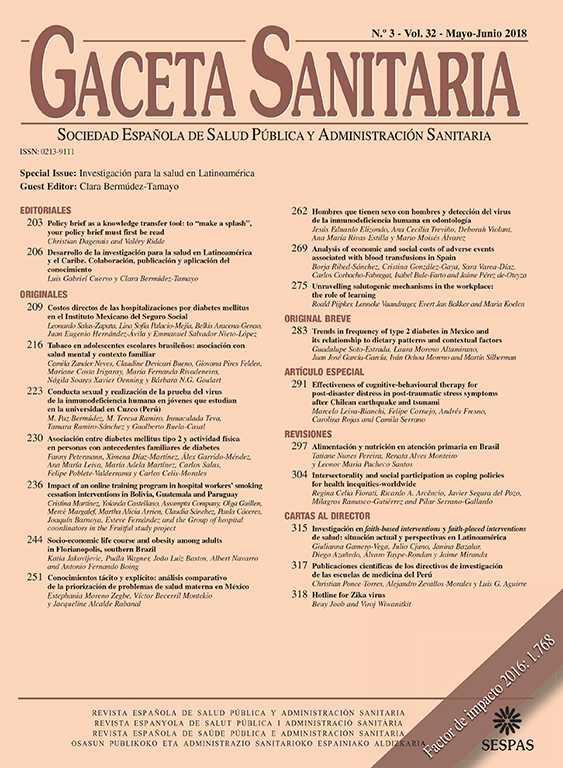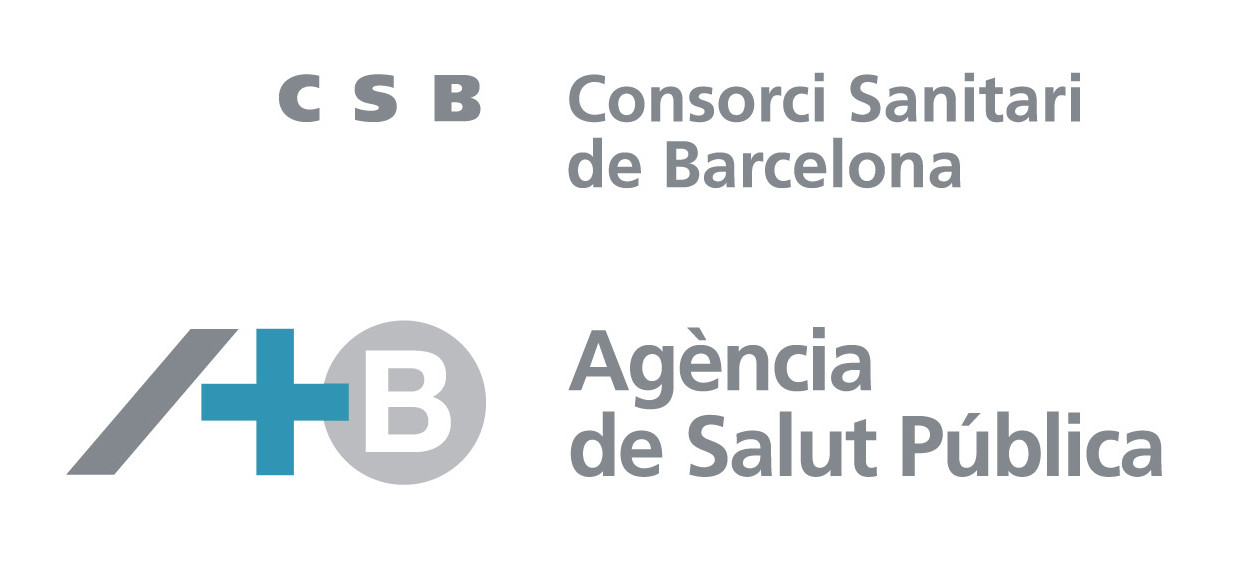To estimate the increase in the prevalence rate of drivers testing positive for alcohol when lowering the breath alcohol content (BrAC) limit from 0.25 to 0.10mg/l.
MethodA cross-sectional study using a sample of 8320 breath tests from a mandatory roadside random survey conducted on interurban roads in Catalonia in 2019.
ResultsThe percentage of drivers with a BrAC>0.10mg/L was 3.8% (95%CI: 3.2-4.4), more than twice the percentage with a BrAC>0.25mg/L (1.6%, 95%CI: 1.2-2.0). Males (4.0%, 95%CI: 3.3-4.6 vs. 1.6%, 95%CI: 1.2-2.0) and those aged over 65 years (4.3%, 95%CI: 2.2-6.4. vs. 0.8%, 95%CI: 0.2-1.5) are particularly impacted by the alcohol limit reduction.
ConclusionsThis study identifies the groups likely to be most affected by a reduction of the legal BrAC limit, highlighting the need for targeted awareness campaigns on the risks of drinking and driving.
Estimar el aumento en la prevalencia de conductores positivos en alcohol al reducir el límite permitido de alcohol en aire espirado (AAE) de 0,25 a 0,10mg/l.
MétodoEstudio transversal utilizando una muestra aleatoria de 8320 pruebas de alcoholemia obligatorias realizadas en carreteras interurbanas de Cataluña en 2019.
ResultadosEl porcentaje de conductores con AAE>0,10mg/l fue del 3,8% (IC95%: 3,2-4,4), más del doble del porcentaje con AAE>0,25mg/l (1,6%, IC95%: 1,2-2,0). Los hombres (4,0%, IC95%: 3,3-4,6 vs. 1,6%, IC95%: 1,2-2,0) y los mayores de 65 años (4,3%, IC95%: 2,2-6,4 vs. 0,8%, IC95%: 0,2-1,5) resultan particularmente afectados por la reducción del límite de alcohol.
ConclusionesSe identifican los grupos más sensibles a la reducción del límite legal de AAE, destacando la necesidad de campañas de concienciación específicas sobre los riesgos de beber y conducir.
Driving under the influence of alcohol is a major risk factor, causing more than a quarter of all road traffic accidents with casualties.1
Spanish legislation on drink and drug driving establishes a standard legal blood alcohol content limit of 0.50g/L of blood or 0.25g/L for professionals and novice drivers. These values correspond to breath alcohol content (BrAC) of 0.25mg/L of breath or 0.15mg/L, respectively.
The Catalan Traffic Authority has periodically measured the prevalence of alcohol-impaired drivers in interurban roads based on random breath tests (RBT) in mandatory roadside surveys. RBT differ from non-RBT in their sample selection method, the former taking a probabilistic approach and the latter adhering to police officer criteria.2 RBT conducted in Catalonia in 2012 showed that 1.29% of drivers tested positive in accordance with the legislation in force.3
In October 2024, the Spanish Congress approved a non-legislative proposal to reduce the BrAC limit for all drivers to 0.10mg/L (0.20g/L in blood). The aim of this study is to estimate the potential impact of this limit reduction on the alcohol-positive driving test prevalence rate in the general population of drivers on Catalan interurban roads. Assuming that there would be no change in the drinking and driving behaviour of the population when the limit is effectively reduced, the percentage of drivers that would exceed 0.10mg/L in a breath test is estimated. The analysis is carried out according to the sex and age of the driver.
MethodA cross-sectional study of 8320 RBT carried out by police officers on interurban roads in Catalonia in the year 2019 is presented. Data were gathered between October 7 and November 30. The roadside survey was designed to estimate the prevalence of alcohol-impaired drivers in the driving population by road type, day of the week, time of day, and vehicle type, among other factors. A two-stage sampling process was performed. First, sobriety roadblocks were placed on randomly selected road sections. Secondly, drivers passing these sobriety checkpoints were randomly stopped by traffic officers and tested for alcohol.3
The standard police procedure at sobriety checkpoints is to conduct a preliminary alcohol breath test in the driver's vehicle using a portable breathalyser. The result of this test is not legally binding. If the result is above the legal limit (i.e., a positive result), the BrAC is estimated in the traffic officer's vehicle using an evidential breathalyser. If the result from the evidential breath testing device is above the legal limit, a second confirmatory breath test is carried out after half an hour. The lower of the two results is retained as evidence to determine whether the driver was driving under the influence of alcohol.
Traffic agents that conducted RBT followed standard procedures, and no exceptions were permitted in the way the checkpoints and modus operandi were established. For each tested driver, the time, location, age and sex as shown on the driving license were collected, together with the BrAC results in mg/L.
The proportion of drivers who would test positive if the alcohol limit was reduced to 0.10mg/L in exhaled breath is calculated and compared with the proportion of those exceeding 0.25mg/L through a difference of proportions test. Estimates and confidence intervals consider sampling weights and the sample design. As drivers with a result between 0.10 and 0.25mg/L on the first preliminary breath test were not retested with the evidential breathalyser, only the outcomes of the preliminary test are analysed in this study. The survey package of the R software was used for statistical analysis.4
ResultsThe percentage of drivers with BrAC equal to 0mg/L was 93.6% (95% confidence interval [95%CI]: 92.9-94.3). The percentage of drivers with a BrAC ≥0.25mg/L was 1.6% (95%CI: 1.2-2.0). The percentage of positive drivers significantly increased to 3.8% (95%CI: 3.2-4.4) when the alcohol limit considered was 0.10mg/L (p <0.01) (Fig. 1).
Table 1 shows the sample characteristics by sex and age groups. The increase in the positive rate when lowering the limit is significant for men, women, and all age groups.
Percentage of drivers testing positive on first breathalyser for alcohol at 0.25mg/L and 0.10mg/L limits. Random breath tests, Catalonia, 2019.
| Variable | Relative frequency (%) | Sample size | Positive tested drivers (≥0.25 mg/L) | Positive tested drivers (≥0.10 mg/L) | Mean difference test (p)a | Increase ratio(M2/M1) | ||
|---|---|---|---|---|---|---|---|---|
| % (M1) | 95%CI | % (M2) | 95%CI | |||||
| Total | 100 | 8,320 | 1.6 | 1.2-2.0 | 3.8 | 3.2-4.4 | <0.01 | 2.4 |
| Sexb | ||||||||
| Male | 80.4 | 6,689 | 1.6 | 1.2-2.0 | 4.0 | 3.3-4.6 | <0.01 | 2.5 |
| Female | 19.5 | 1,622 | 1.5 | 0.7-2.4 | 3.0 | 1.9-4.2 | <0.01 | 2.0 |
| Age, years | ||||||||
| <25 | 8.2 | 683 | 1.1 | 0.2-2.0 | 2.9 | 1.3-4.5 | 0.02 | 2.6 |
| 25-44 | 43.9 | 3,652 | 1.4 | 0.9-2.0 | 3.5 | 2.7-4.4 | <0.01 | 2.5 |
| 45-64 | 40.1 | 3,336 | 1.9 | 1.2-2.6 | 4.2 | 3.2-5.1 | <0.01 | 2.2 |
| ≥65 | 7.8 | 649 | 0.8 | 0.2-1.5 | 4.3 | 2.2-6.4 | <0.01 | 5.4 |
95%CI: 95% confidence interval.
The new legal alcohol limit will put Spain on a par with countries like Norway or Sweden, and only with less restrictive limits than European countries with a zero-alcohol limit, such as Czech Republic or Hungary.
We found that the percentage of randomly selected drivers who would test positive at the new BrAC limit (3.8%) is more than double the percentage of detected positives (1.6%) with the existing limit. Note that the estimated alcohol prevalence rate with the new BrAC limit is calculated under the assumption that there would be no change in the drinking and driving behaviour of the population when the new policy is initiated. There is evidence that lowering the allowable limit is an effective control policy to reduce both alcohol-impaired driving5 and alcohol-related traffic accidents.6,7 Therefore, we anticipate that reducing the BrAC limit should result in a prevalence rate lower than the one found in our analysis. However, studies also suggest that lowering the alcohol limit must be accompanied by increased random breath testing and stricter penalties to effectively decrease alcohol-related traffic accidents.8–10 Assum8 addressed the reduction of the BrAC limit in Norway and concluded that, although more people claimed they would drink no alcohol before driving, no long-term impacts on alcohol-related accidents were achieved. Similarly, no significant changes in road traffic accident rates were found following the reduction of the BrAC limit in Scotland.9,10
The response to lowering the BrAC limit could vary depending on the age and gender of the driver, as suggested by Desapriya et al.6 in 2007. Alcohol consumption and drink-driving behaviour are not homogeneous across all groups of drivers.2,11 We found that both men and women are significantly affected by the reduction in the legal alcohol limit (p <0.01), but men seem to be more impacted. Drivers over 65 were also particularly affected by the reduction of the legal limit.
Our findings align with the drinking habits reported by the Catalan Health Survey, which indicate that men are much more likely than women to identify as drinkers.12 Age is not clearly associated with drinking, but with the type of drinker.2 Young people are associated with drinking patterns that are concentrated on weekend nights and in certain locations.13 In contrast, older people tend to drink more regularly and more moderately throughout the week.14
Our study provides evidence to identify which groups are likely to be most affected by the lowering of the legal alcohol limit and, therefore, should be targeted by policies to raise awareness of the risks of drinking and driving.
This research has some limitations. The estimated positive-alcohol prevalence rates are based on the preliminary test. Almost 20% of the drivers who tested above the current legal limit on the preliminary portable breathalyser were below this BrAC on one of the two evidential breath tests. This reduction could be due to the greater time elapsed after drinking before the confirmatory tests were carried out, as it is known that the BrAC decreases thirty minutes post-drinking.15 The greater accuracy of the breath tester used for the confirmatory tests could also have contributed.
Availability of databases and material for replicationThe data supporting the findings of this study are not openly available as a whole due to confidentiality criteria and regulations. Anonymous data were provided by the Catalan Traffic Authority for research purposes.
Editor in chargeSalvador Peiró.
Alcohol consumption is one of the main risk factors for road accidents. The prevalence of drinking and driving can be estimated by roadside alcohol breath tests conducted by traffic police officers, but only drivers over the legal limit are classified as positive.
What does this study add to the literature?Reducing the alcohol limit to classify drivers as positive significantly increases the prevalence, with male drivers and those over 65 being the most affected.
What are the implications of the results?This study informs decisions by showing how lowering the legal alcohol limit affects the prevalence of positive cases, assuming drivers’ behaviour remains unchanged.
The corresponding author, on behalf of the other authors guarantee the accuracy, transparency and honesty of the data and information contained in the study, that no relevant information has been omitted and that all discrepancies between authors have been adequately resolved and described.
Authorship contributionsM. Santolino conceived and planned the study. M. Alcañiz prepared the database for analysis. M. Santolino, M. Alcañiz and M. Guillen performed the data analysis, drafted the manuscript and contributed to critical discussion. All authors read and approved the final version of the manuscript.
AcknowledgementsThe authors thank the Catalan Traffic Authority and the Catalan police force, Mossos d’Esquadra, for carrying out the field work and providing the data.
FundingThis study was supported by the Spanish Ministry of Science, Innovation and Universities, Agencia Estatal de Investigación, under grant TED2021-130187B-I00, and by the Departament de Recerca I Universitats, the Departament d’Acció Climàtica, Alimentació i Agenda Rural, and the Fons Climàtic of the Generalitat de Catalunya (2023-CLIMA-00012). M. Guillen also thanks support received from ICREA Academia.
Conflicts of interestNone.

















